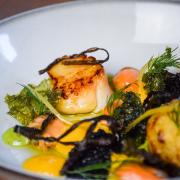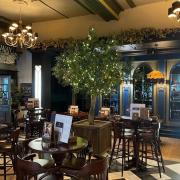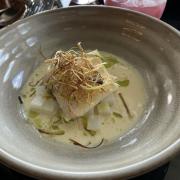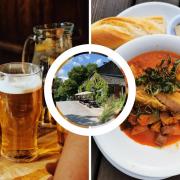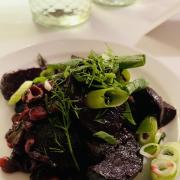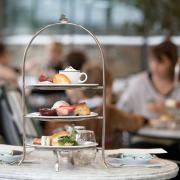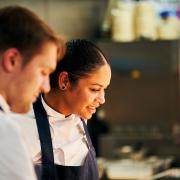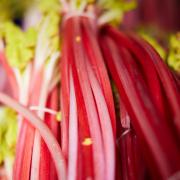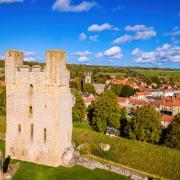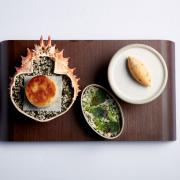Apples come in all shapes and sizes and growers don't always reap what they sow, as Martin Fish explains
The simple apple is part of our heritage and has a long history of being grown in England. The common crab apple (Malus x domestica) found growing wild in hedgerows, is native to Europe and Britain but it is the cross pollination with other wild apple species from Asia and southern Europe that have increased the variety of fruits.
The Romans very much liked their apples and planted early orchards in Britain and grafted their favourite types of apple onto seedling apples. Traders bringing spices and silks to Britain also brought with them many different apples and the trees that grew from their pips also added to the gene pool. By the 13th century apple growing was increasing in popularity in many parts of the country and formed a large part of the rural economy and way of life.
There are over 2,000 named varieties of apples at the National Fruit Collection at Brogdale in Kent, but in reality there are many more known varieties worldwide, many of which are no longer grown or have died out.Apples do not grow true to type from seed, so if you plant the pips from a Granny Smith, the trees that grow will all produce different fruits, most of which will be more like crab apples. However, this is exactly how new varieties of apples are grown.
Many old varieties were chance seedlings, where as nowadays breeders will carefully select the parentage. Even then the odds are 10,000 to one a new apple variety for commercial use is created. And once you have your new apple, the only way to propagate it is to graft shoots from the tree onto seedling apples in spring, or to bud in summer, when a bud is taken from the stem of the apple variety and inserted into a slit in the bark of the root-stock.
Fortunately many apple varieties have stood the test of time and one of the best known is the Bramley Seedling which was a chance seedling planted by a young girl in a Nottinghamshire garden in 1809. Several years later a local nurseryman saw a basket of fruits from the tree, negotiated some graft wood and started the first commercial Bramley orchard. The rest as they say is history and more than 200 years later Bramley Seedling is still one of the most popular cooking apples.
Yorkshire also has its fair share of apples which originated in the countyor have been grown here for a long time. Many of these varieties, some of which date back to the 1700s, can be found growing at several sites around the county. The Northern Fruit Group is instrumental in growing and preserving all types of fruit, both old and new and now base their main growing area at Harewood House, near Leeds. There they grow not only old varieties, but also trial new fruit varieties to see how they perform in the northern climate.
Where Yorkshire apples are grown
R. V. Roger Ltd – Pickering, North Yorkshire (also sell young trees of many Yorkshire varieties)
Ampleforth Abbey Orchard, North Yorkshire
Beverly Millennium Orchard, North Yorkshire
Harewood House, Leeds
RHS Harlow Carr, Harrogate
Helmsley Walled Garden, North Yorkshire
Benningborough Hall Garden, near York
Newby Hall, Ripon
Great Yorkshire Showground, Harrogate
Nunnington Hall Orchard, near York
You will also be able to see many types of apples, including some Yorkshire varieties at the Harrogate Autumn Flower Show on September 16th-18th at the Great Yorkshire Showground.
The Northern Fruit Group will also be giving a talk on Yorkshire apples at the Kitchen Garden Live theatre on all three days of the show.
Yorkshire apples
Probably the best-known Yorkshire apple is the Ribston Pippin which dates back to 1707. The original tree is reputed to have been grown from a pip brought from Rouen by Sir Henry Goodricke to Ribston Hall, near Knaresborough. Through the 1800s it was grown commercially and was a popular dessert apple for its rich, intense aromatic flavour and keeping qualities.
Cox’s Orange Pippin is believed to have grown from a pip of Ribston Pippin in the mid 1800s.Acklam Russet dates back to the mid 1700s and originates from the village of Acklam. The fruits have a dark, textured russet skin and the flesh has a rich taste. Although classified as a dessert apple, newly harvested fruits are often used in cooking.
One of the most recent Yorkshire introductions is Grandpa Buxton which came from Copt Hewick, near Ripon, in the mid 1990s. Although not grown on a large scale, it is a popular cooking apple that is a reliable cropper producing large attractive yellow/green fruits flushed with red.
A very distinctive looking apple is Dog’s Snout with its pear shaped fruits. Its age is unknown, but it pre-dates 1875. This is a very hardy and reliable variety that produces fruits with good flavour.
Yorkshire Beauty is a cooking apple that has a very good flavour. It dates back to the late 1700s and produces large angular fruits with a rose flush.
Some other Yorkshire apples to look out for include: Flower of the Town (1831), New Bess Pool, (1850) a seedling from the Nottinghamshire variety Bess Pool, Cockpit Improved (1800s), Yorkshire Greening (1759) Sharleston Pippin (pre-1888), Hornsea Herring (1885), Helmsley Market (pre-1935) and Fillingham Pippin (1800s).



